Sending the perfect influencer paid collaboration pitch email can feel like walking a tightrope — you must be confident, creative, and professional while remaining true to your voice
For travel creator Jessica Serna (@mycurlyadventures), pitching has become an art form—and during our Pitch Simulator webinar, she showed us how it’s done.
Serna presented a sample email pitch for Helix Mattress, and it wasn’t your standard “Hi, let’s work together” template. Her pitch was so thoughtful that Helix’s marketing team and a talent manager reviewing it live called it a home run.
Serna’s approach offers a step-by-step blueprint for any creator looking to level up their pitching game. Ready to learn how to craft a pitch that brands can’t resist?
Table of contents:
- What to research before composing your pitch
- An influencer brand collab email example
- The anatomy of a standout brand collaboration pitch email
- 1. Hook
- 2. Relate to the brand
- 3. Next steps
- 4. Finish strong
- Pitch email checklist: final touches before you hit send
- Collab with your dream brands using our pitch email example
What to Research Before Writing Your Influencer Brand Pitch Email
Let’s be real—no one likes a copy-paste pitch. Brands can sniff out a generic email faster than you can hit “send.”
Before sending your influencer outreach email, take the time to understand who you’re pitching and what makes them stand out in their space.
Why Research Matters Before Pitching a Brand
Strong research is what separates effective influencer outreach from the kind that ends up ignored. A quick scroll through the brand’s Instagram won’t cut it. To land real collaborations or paid partnerships, you need to dig deep into what the brand stands for, who they target, and how they communicate.
A quick scroll probably won’t cut it—you must dig deeper to understand the brand and what makes them tick.
How Creators Use Research to Strengthen Pitches
Travel influencer Jessica Serna shared her experience pitching Helix Sleep, a brand known for its science-backed mattresses and customer-first approach.
During our Pitch Simulator webinar, she revealed how she researched Helix’s strategy—diving into their website, ad campaigns, and recent media coverage to understand their marketing direction.
She studied product pages, customer reviews, and even their YouTube ads to get a sense of Helix’s tone and storytelling.
“I wanted to show them I wasn’t just spamming every mattress company out there,” Serna said. “I wanted to prove that my pitch aligned with their brand.”
This level of prep signals that you’re serious about potential collaboration—not just chasing another deal.
Why Brands Respond Better to Well-Researched Pitches
When your research backs your influencer paid collaboration pitch email, brands can immediately tell you’re thoughtful, credible, and ready to be a true partner—not just another name in their inbox.
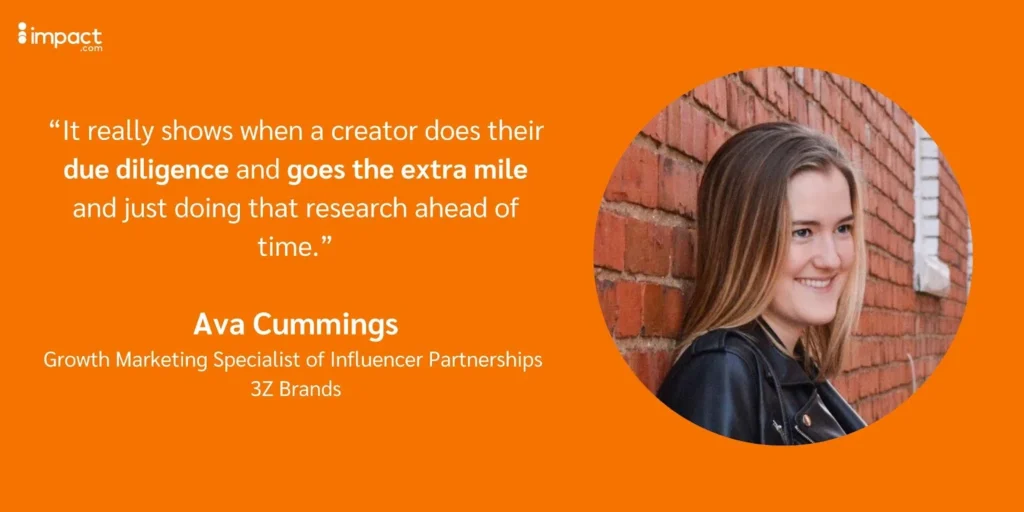
4 steps to research a brand like a pro
- Look at their product pages, their story, and what makes them different. For Helix, it was their science-driven techniques and clinical studies that stood out to Serna, who made it the centerpiece of her pitch.
- Stalk their marketing (in a good way). Search for their ads, hashtags, and recent collabs to understand how they position themselves.
- Check out the brand’s vibe to see if you’re a fit. Look at the content they post and who they partner with.
- Find your angle. Consider what you bring to the table that fits their style but still stands out.
When you take the time to research, you’re building a connection. And that’s what brands are looking for–creators who get them and bring fresh, exciting ideas to the table.
In the webinar, Influencer Talent Manager Johanna Voss discusses how thoroughly researching a brand can make your pitch stand out.
Jessica Serna’s Influencer Collaboration Pitch Email Template
Serna nailed her brand research and delivered a pitch email that perfectly resonated with Helix Mattress.
Here’s what it looked like:
Hello Taylor and Eva,
My name is Jessica and I’m the content creator of MyCurlyAdventures, with a reach of over 1 million followers, and the owner of an ice cream-themed Airbnb, Casa Kumesu.
My followers trust me as a travel expert, and one thing that always comes up when traveling is the quality of beds. I want to help my readers experience a travel-worthy sleep every night. The way Helix has science-backed data with actual clinical trials, and has been voted best mattress by major companies like Wired, is something I know is going to be a selling point when I share why Helix is the best mattress for people who want to improve their sleep quality.
I see Helix does a lot of YouTube ads, so I wanted to explore some opportunities to highlight in our travel vlogs the excitement of being able to go home and sleep on our Helix mattress. Basically, it’s like extending our vacation!
But also, I believe we have the unique value add of our ice cream-themed rental! People who book a stay at our house can experience the mattresses for themselves, and we can provide links for people to purchase the mattress when returning home.
Would you or someone on your team have the availability to hop on a call to discuss possible opportunities for collaboration? I’d love to hear more about Helix’s current campaigns and marketing goals, how they’re working with influencers, and how I might be able to add value.
I’ve included more information about myself here with details, including social stats, successful past partnerships, and more. You can also find my media kit here.
📎 My Curly Adventures Website: 100k UMVs, 19k newsletter subscribers
🎵 TikTok: 519.3k followers
👍 Facebook: 135k followers
📷 Instagram: 224k followers
▶️ YouTube: 17.1k subscribers
📌 Pinterest: 509k monthly views
Best, Jessica Serna
Now, let’s break down why this pitch worked so well.
The Anatomy of a Perfect Influencer Pitch Email
The best influencer pitch emails feel personal, creative, and well thought out—like Serna’s pitch that wowed Helix Mattress.
Her pitch made them think, “This is exactly what we need.” Want to do the same? Here’s what to include.
1. Introduce Yourself With a Strong Hook in Your Pitch Email
First impressions matter when you’re sliding into a brand’s inbox. Your intro should feel like a warm handshake—friendly and confident.
The key? A hook that makes a brand want to keep reading.
Serna’s pitch intro was short and sweet. She included key information about herself and some memorable facts that stick out even in the most crowded inbox.
“I throw out some big numbers related to my reach and following. I also own an ice cream-themed Airbnb, which I think is an interesting hook,” she says.

The trick is to be interesting and on-brand. Give them a reason to remember you.
An ice cream-themed Airbnb? That’s not something you forget.
Serna’s hook works because it’s short, intriguing, and hints at her creative side—all without overwhelming the brand with information.
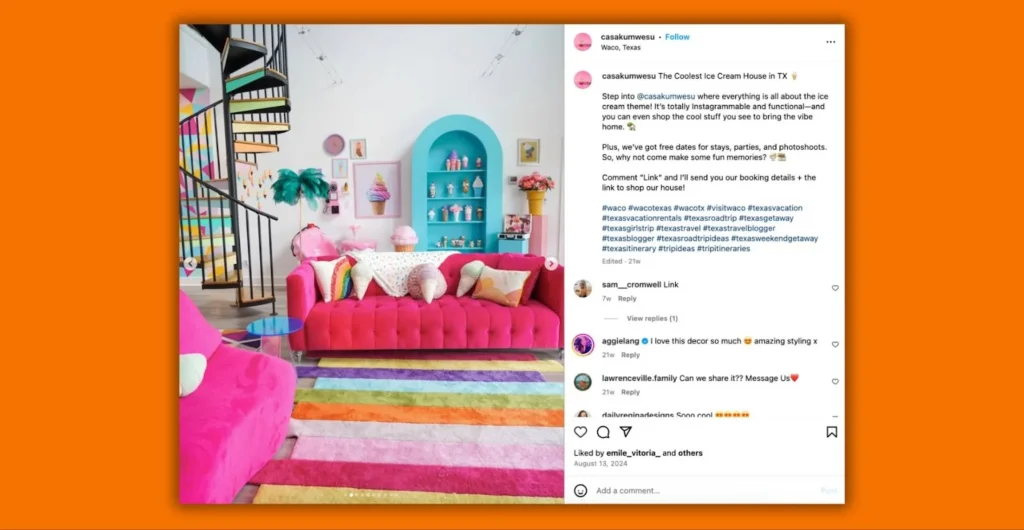
Casa Kumwesu gives Serna a powerful edge to hook her pitch readers from the start.
She also makes it easy for the brand to check her out by linking her press page where they can see her performance numbers and past work.
“If I just said I had a million followers, and they checked Instagram, they’d wonder why it only showed 230,000. The press page gave them the full picture without any confusion,” she explains.
Making the key details easy to understand will boost your chances of scoring that deal.
Why the Brand Loved This Influencer Introduction
Serna’s thoughtful introduction was clear and concise, presenting her skills without getting bogged down in unnecessary details.
This impressed Ava Cummings, a Senior Specialist of Growth Marketing for Influencer Partnerships at 3Z Brands. She noted, “The hook gave us a clear sense of who she is as a creator.”
The clean, professional tone works perfectly for busy brand managers juggling countless pitches.
With a pitch intro that was structured, thoughtful, and impactful, Serna didn’t just ask for their attention—she earned it.
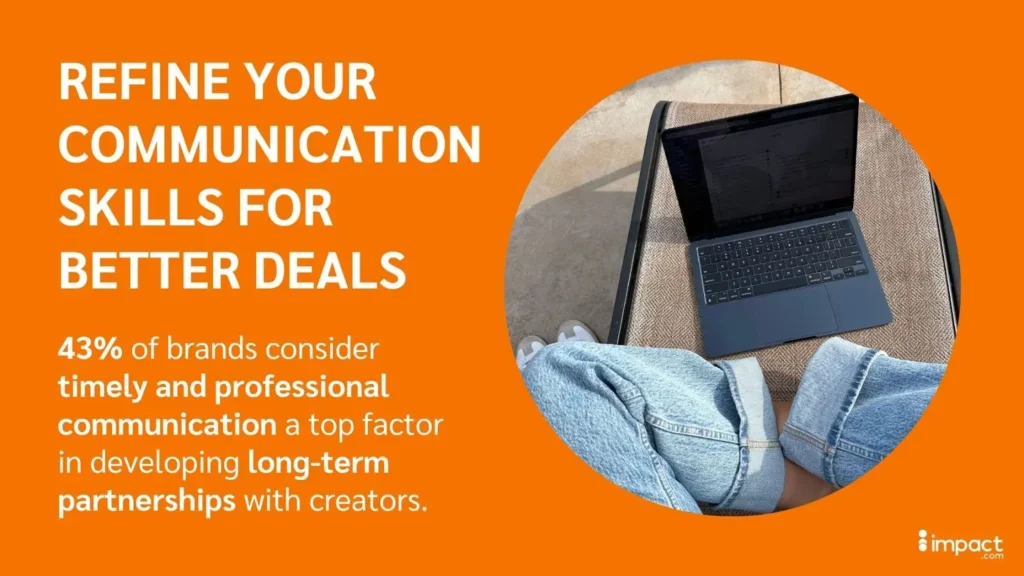
Source: What brands want: building successful creator partnerships
How to Hook a Brand With Your Pitch Email Intro
- Keep it snappy. No need for a novel—one or two sentences is plenty.
- Be uniquely you. Think about what makes you memorable. Do you have a quirky project, an impressive stat, or a fun fact that ties into your pitch? Share it!
- Make it easy for them. Add a link to your social media, portfolio, or press page so it’s easier for them to see your work.
Your intro doesn’t need to list every achievement—it just needs to spark curiosity.
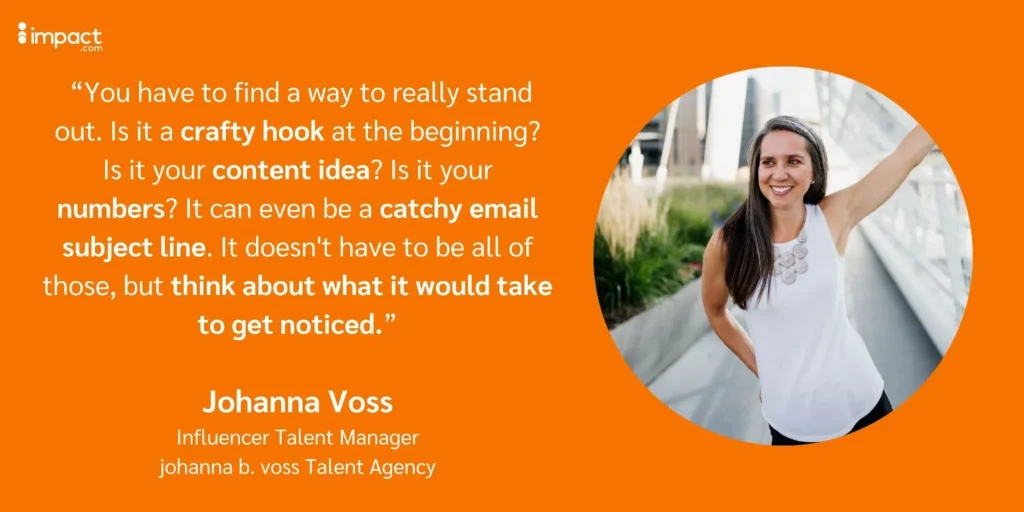
2. Relate to the brand
The middle of your pitch is your chance to show the brand you’ve done your homework. Highlight your fresh, personalized vision for how you can make their product shine.
Serna shared how she approached her pitch to Helix Sleep despite working in a different niche (travel). Instead of molding herself into what she thought they wanted, she leaned into what made her unique.
“I travel a lot and sleep in a ton of beds. That’s where my expertise comes in. I also love clinical, science-based products, and Helix’s focus on that stood out. I wanted to highlight how much I believed in their product when I pitched them,” she explained.

Serna also thought creatively about how her content could fit into Helix’s strategy, even though she wasn’t a traditional mattress reviewer.
“I saw they were big on YouTube pre-roll ads and vloggers. So I pitched the idea of including their mattress in my travel content. Something like, ‘I can’t wait to get home and sleep on my beautiful Helix mattress after all this traveling,’” she said.

And then came her wildcard idea.
“I threw in the idea of putting a Helix mattress in my ice cream-themed Airbnb,” she explained.

She laid out her vision of allowing guests to test the mattress and then providing a link to purchase it after they returned home.
“It’s not something I’d seen them do before, but it felt like a cool way to bring their product to life,” she said.
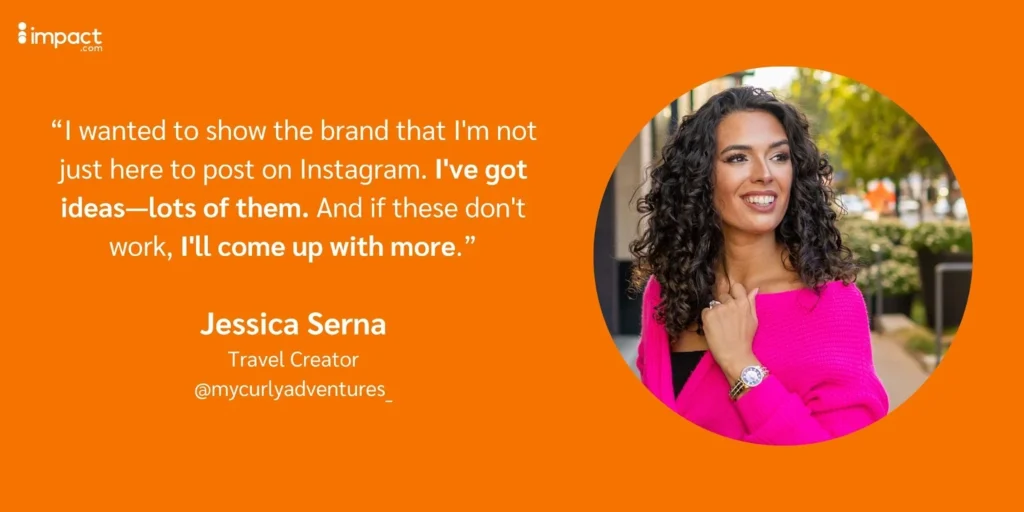
Why Brands Loved This Personalized Pitch Email
The Helix team loved Serna’s pitch because it didn’t feel cookie-cutter. Cummings pointed out that her unconventional approach highlighted new angles they hadn’t considered.
“She wasn’t just trying to fit into a role that didn’t suit her,” she said.
Taylor DeMulling, a Brand Manager at Helix Sleep, was impressed by Serna’s fresh ideas that resonated with the team’s vision.
“Her pitch made it easy for us to see where she fit into our strategy. She came with clear, exciting ideas that aligned with what we do,” she said.
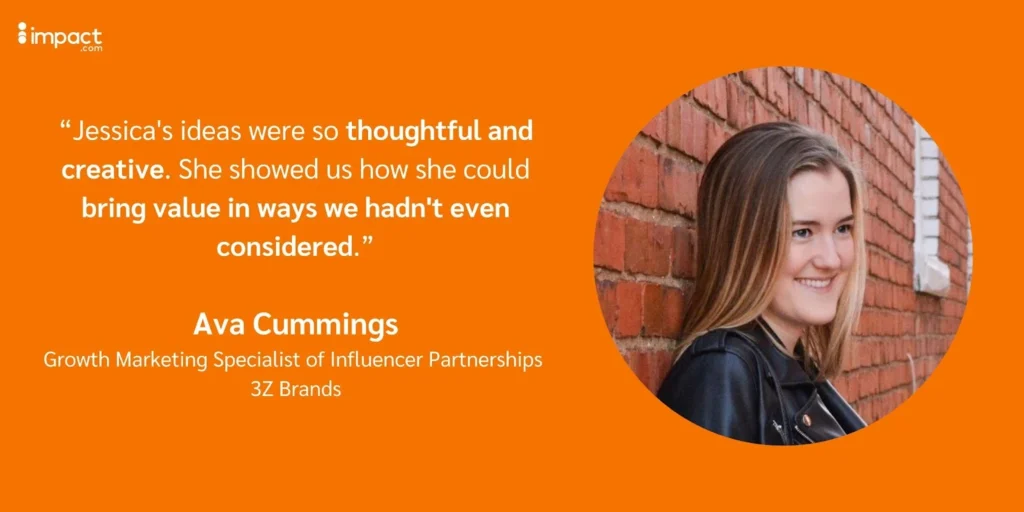
Tips for Building a Strong Brand Connection in Your Outreach Email
- Play to your strengths. Maybe you’re not a perfect match for their usual collaborators. You can use this to your advantage by highlighting what makes you different.
- Make it personal. Explain why you believe in the brand and how their product fits into your life or content.
- Think outside the box. Even if it’s not exactly what they’re looking for, it shows that you’ve considered how you could work together.
So, when you’re crafting your pitch, don’t just tell them what you can do—show them how you’ll make it awesome for them. That’s how you stand out.
In the Pitch Simulator webinar, Cummings highlights the qualities that made Serna’s pitch connect with the Helix Brand.
3. Lay Out the Next Steps in Your Influencer Collaboration Pitch Email
You’ve introduced yourself, made your case, and shared your ideas. Now, it’s time to take things from email to a real conversation. Start building a relationship with the brand.

Serna clearly outlined the next steps for the brand if they were interested in collaborating.
“I always like to suggest hopping on a phone call. It doesn’t always happen, but when it does, it’s such a great way to connect. Talking to someone directly helps me learn more about what they’re looking for and where I might fit.”
Serna also pointed out how staying open to the brand’s feedback can lead to opportunities later. By staying gracious and proactive, Serna ensures that every interaction keeps the door open for future partnerships.
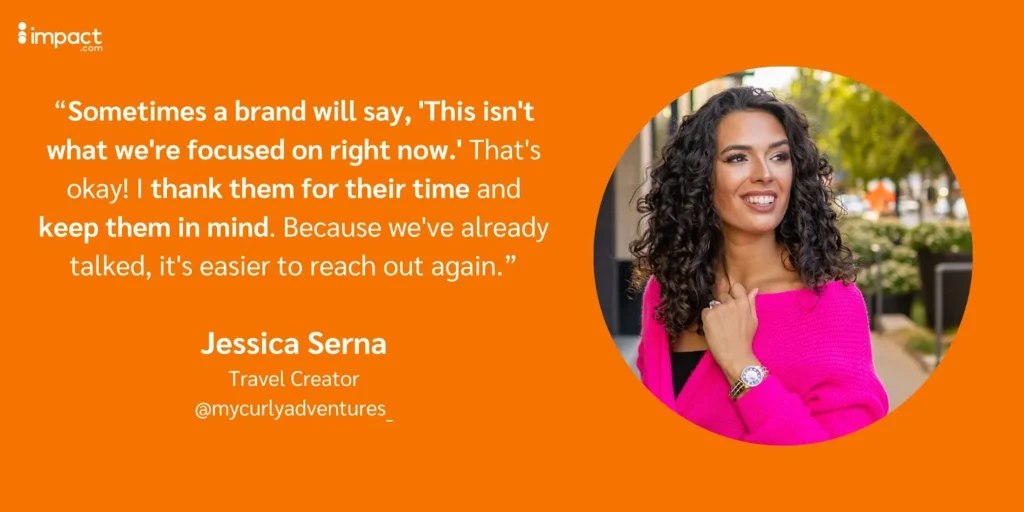
Why brands love it
Brands value creators who take initiative without being pushy. Suggesting a call shows you’re serious about working with them and ready to collaborate.
Plus, it signals that you care about their goals—not just pitching your own ideas.
Serna’s approach reassures brands that she’s invested in building long-term relationships, even if the timing isn’t right.
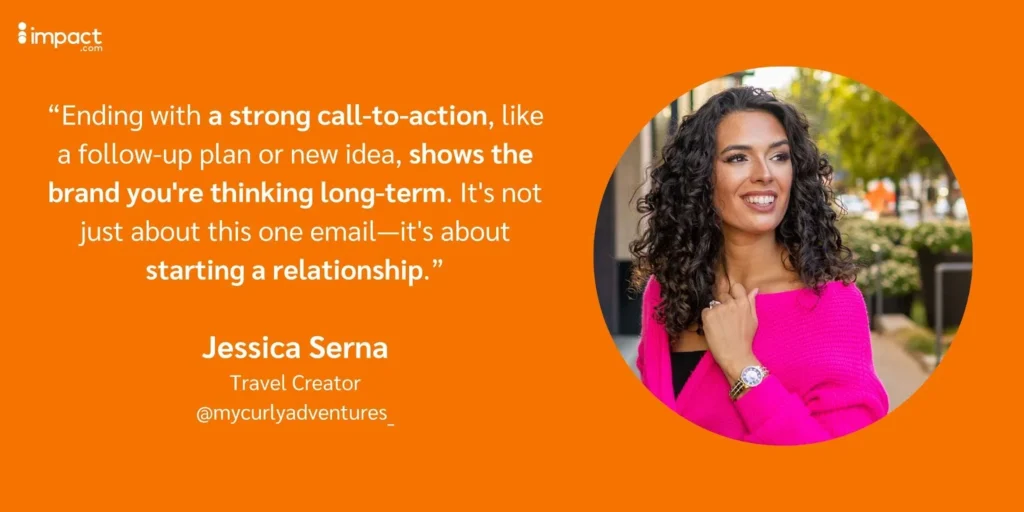
Tips for following up like a pro
- Make it personal. Ask for a quick call or meeting to discuss how you can help them achieve their goals. Show you’re interested in them, not just the deal.
- Keep it low-pressure. If they can’t talk now, be gracious. Thank them for their time and keep the tone open to allow for future conversations.
- Think long-term. Even if this isn’t a fit, the relationship you start now could lead to something bigger later.
Laying out the next steps helps show the brand that you’re ready to collaborate, grow, and add value.
In the Pitch Simulator webinar, Voss offers advice on approaching follow-ups and how brands may communicate during the process.
4. Finish strong
Wrap up your email by giving the brand easy access to your key info—without overwhelming them. Serna adds her media kit, follower stats, and links at the bottom so the brand can explore when they’re ready.
She keeps the details scannable, allowing brand managers to get the highlights quickly.

Why brands love it
Brands appreciate creators who respect their time. Serna’s pitch stood out because it was easy to read, and all the extra info was neatly tucked away at the end.
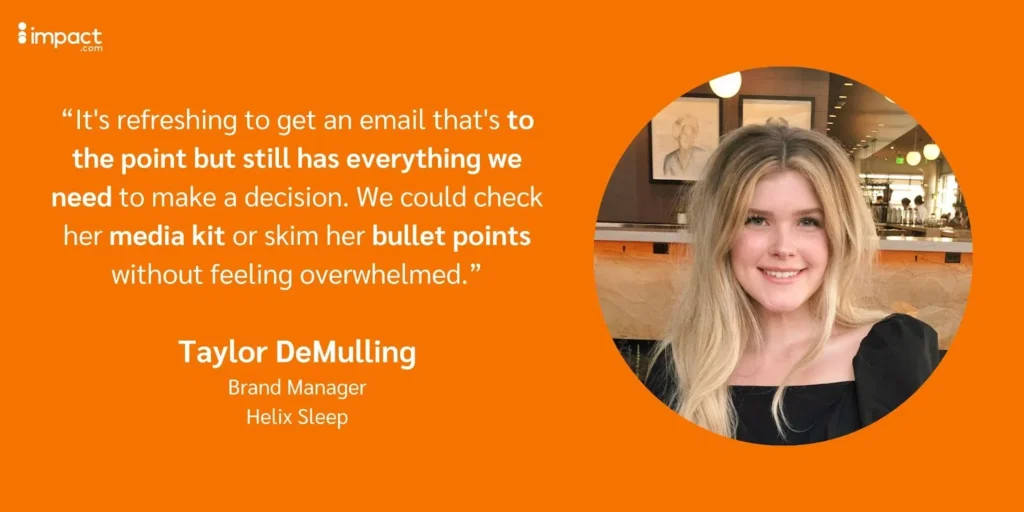
Tips for wrapping it up
- Add links, not clutter. Include a link to your media kit, portfolio, or press page, so the brand can dive deeper when they’re ready.
- Make it scannable. Add bullet points with key highlights such as follower counts, demographics, or notable campaigns.
- Leave them smiling. A playful touch or clever sign-off can leave a lasting impression.
Finishing strong doesn’t mean overloading the email—it means giving the brand a clear and effortless way to say, “This creator is the one.”
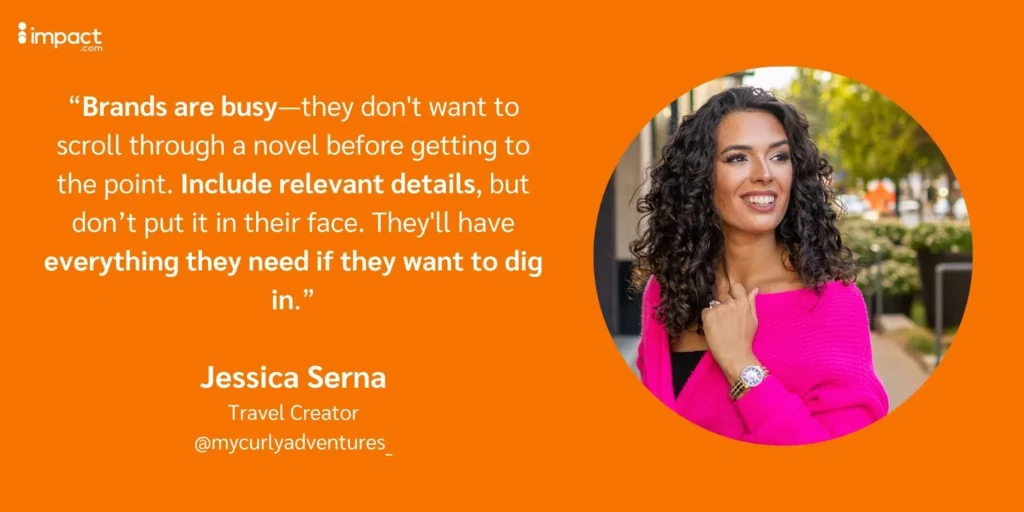
Pitch email checklist: final touches before you hit send
A polished pitch email shows professionalism and respect for the brand’s time. Typos, unclear messaging, or missing details can hurt your credibility—and your chances of a response. Double-checking ensures your email signature looks professional and your message reflects your influencer marketing expertise every time.
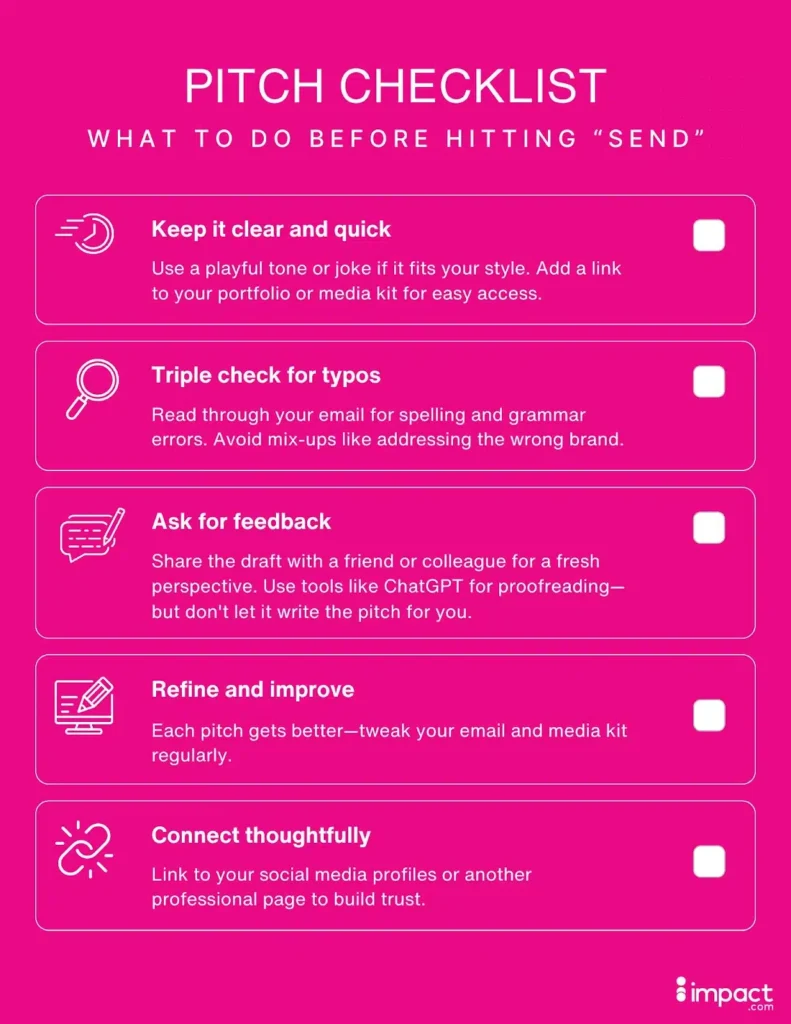
Collab with your dream brands using our pitch email example
Sending a great brand collaboration email is just the beginning. If you don’t hear back right away, don’t panic—sometimes, timing is everything.
The key is to be respectful and persistent without being pushy. A well-timed, thoughtful follow-up email shows the brand you’re genuinely interested and keeps you top of mind for future influencer marketing campaigns.
The impact.com Marketplace connects creators like you with brands looking for authentic partnerships. It’s your go-to place to find brands that align with your niche and build lasting collaborations.
Want to Land More Collabs? Explore These Resources
- Creator Business Bootcamp: Pitch Simulator (webinar)
- 5 research-backed ways creators can stand out when pitching brands (blog)
- Creator analytics: How to prove your worth to land and keep more brand deals (blog)
FAQs
Influencer Pitch Email FAQs
DMs can be a great tool for influencer outreach — if done right.
- Research the brand and know their audience.
- Personalize your message by referencing their latest posts or campaigns.
- Be concise and professional.
- Suggest ideas that align with their brand’s current influencer marketing strategy.
Pro Tip: Only about 5% of brands source creators directly. Be proactive and show value.
Your influencer pitch email should be clear, skimmable, and professional.
Follow this proven brand collaboration email template:
- Subject line: Short, professional, value-driven
- Introduction: Who you are and what you create
- Connection: Show you understand their audience
- Collaboration ideas: Mention potential content types (like product reviews, giveaways, or affiliate codes)
- CTA: Suggest a call or next step
- Email signature: Include your social media platforms and media kit link
Your collaboration email subject line should spark curiosity while staying professional.
Examples:
- “Excited to collaborate with [Brand Name] on your next product launch”
- “Fresh content idea for [Brand Name]’s next influencer campaign”
- “Why I love [Brand Name] — and how we can collaborate”
Keep it under 10 words and focus on authenticity.
To convince a brand, your influencer marketing pitch must show clear alignment.
- Research the brand’s goals and campaigns
- Highlight your value with engagement metrics or case studies
- Propose creative ideas like user-generated content or affiliate partnerships
- Show professionalism — your tone matters as much as your numbers
- Include social proof: Past Instagram posts, campaign wins, testimonials
End with a CTA: Include your email address or booking link
Include a discount code or affiliate link only if it strengthens your offer.
If you’re pitching for a brand ambassador program or affiliate partnership, mention it early to highlight your potential ROI.
Otherwise, wait until the brand shows interest before discussing details.





